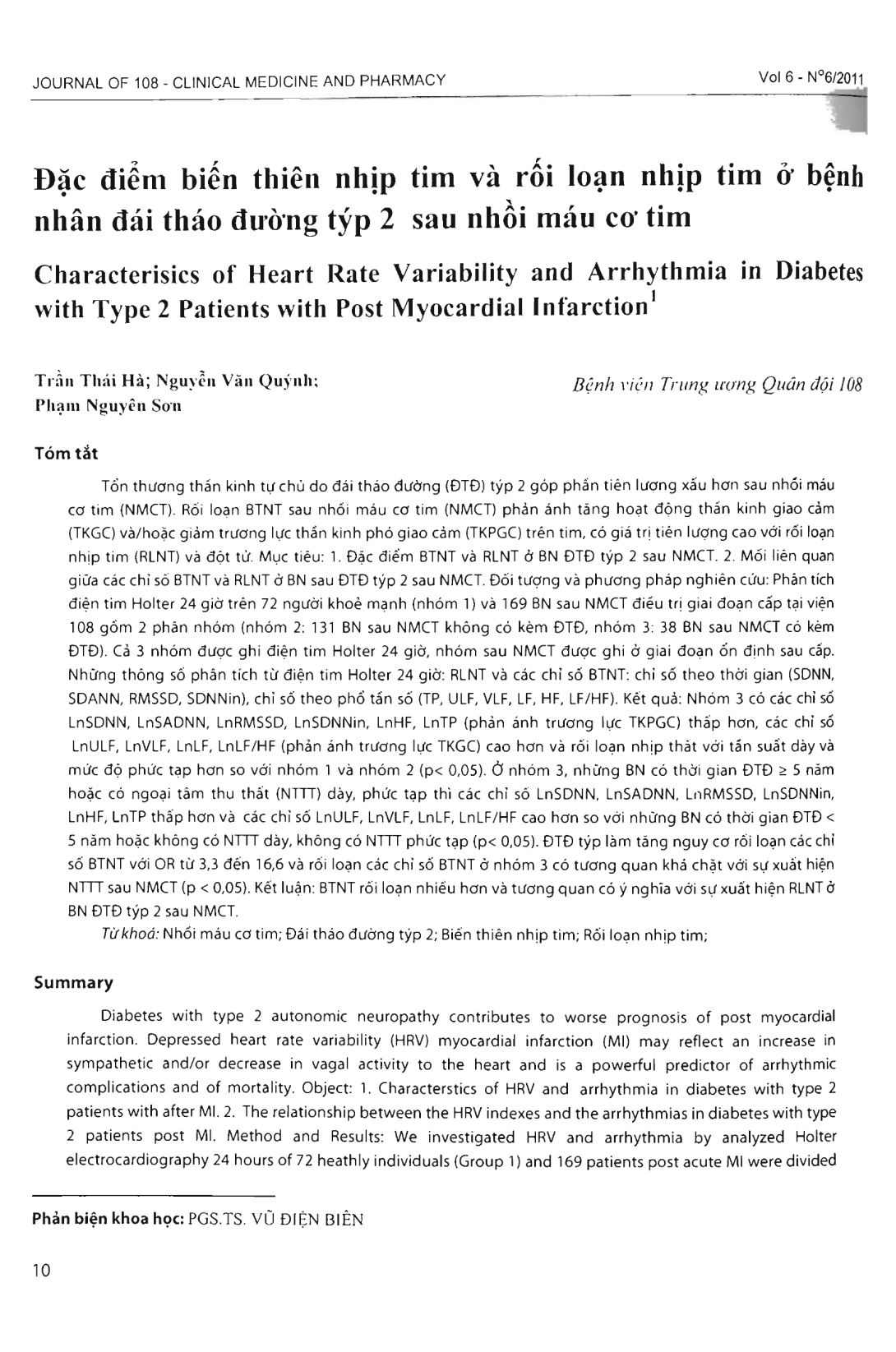
Diabetes with type 2 autonomic neuropathy contributes to worse prognosis of post myocardial infarction. Depressed heart rate variability (HRV) myocardial infarction (MI) may reflect an increase in sympathetic and/or decrease in vagal activity to the heart and is a powerful predictor of arrhythmic complications and of mortality. Object: 1. Characterstics of HRV and arrhythmia in diabetes with type 2 patients with after MI. 2. The relationship between the HRV indexes and the arrhythmias in diabetes with type 2 patients post MI. Method and Results: The authors investigated HRV and arrhythmia by analyzed Holter electrocardiography 24 hours of 72 healthy individuals (Group 1) and 169 patients post acute MI were divided into 2 subgroups (Group 2: 131 post MI without diabetes type 2 and Group 3: 38 post MI with diabetes with type 2). Group 3 had a significantly lower values (LnSDNN, LnSDANN, LnRMSSD, LnSDNNin, LnTP, LnHF) and higher values (LnULF, LnVLF, LnLF, LnLF/HF) of HRV and the arrhythmias were more frepuent, complex than those in Group 1 and 2 (p 0.05). In Group 3, the patients had had diabetes for more than 5 years or frequent or complex extrasystole, who had lower values (LnSDNN, LnSDANN, LnRMSSD, LnSDNNin, LnTP, LnHF) and higher values (LnULF, LnVLF, LnLF, LnLF/HF) of HRV than those who had had diabetes for less than 5 years or no frequent or complex extrasystole (p 0.05). The diabetes with type 2 got to increasing risk to the change of HRV indexes (with OR from 3.3 to 16.6), which had close correlate with the appearance of extrasystole in deabetes with type 2 post myocardial infarction. Conclusions: The HRV indices were more disordered and of significant correlate with with the appearance of arrhythmias in deabetes with type 2 post myocardial infarction.
- Đăng nhập để gửi ý kiến
